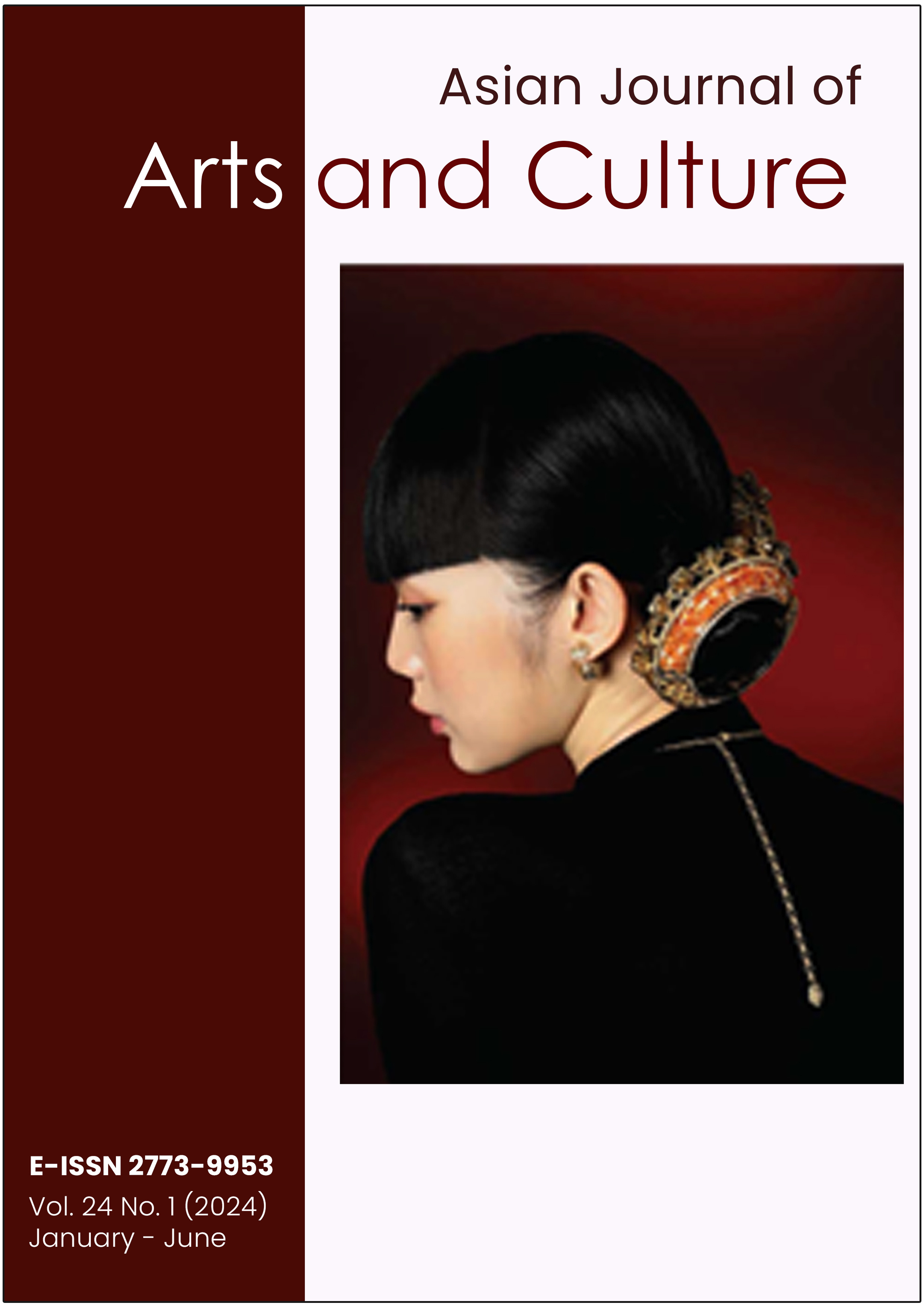A Study of Floral Images in Chinese-Western Feminist Art Creation
Main Article Content
Abstract
Both in the West and the East, for a long time, the plant “flower” has always been favored by various artists and poets as a metaphor for women, but mostly in a male-dominated society, the relationship between women and flowers was interpreted with a male vision, until the late 1960s, when the rise of feminist art and the awakening of feminist artists brought more attention to the fact that women's perceptions, emotions, and representations of the world were vastly different from those of men. Feminist artists have a strong sense of self, and their individuality often leaves a deep mark on their works. This mark is given a special conceptual language through the imitation of nature and is projected in the formal expression of their works, which becomes the unique style of each artist. Through these floral images, we can discover the artist's style and thus the personality, as well as certain social phenomena, psychological perceptions, and value orientations that characterize the times under the personality level. This article will compare and analyze the different artistic expressions of flowers by feminist artists in the two places, as well as the artworks of the author's perception of flowers.
Article Details

This work is licensed under a Creative Commons Attribution-NonCommercial-NoDerivatives 4.0 International License.
© 2018 by Asian Journal of Arts and Culture, Walailak University. All rights reserved.
References
Art and Design. (2019). Flowers are not only the genitals of plants but also the love and desire of female artists. Retrieved from https://www.163.com/dy/article/ETN0LJ7U05148Q26.html.
Baike, B. (2021). Chen Lingyang. Retrieved from https://baike.baidu.com/item/%E9%99%88%E7%BE%9A%E7%BE%8A/310852?fr=aladdin.
Chen, J. (2005). Women Flowers The schematic significance of flowers in feminist art. Art Wide Angle, 2005(005), 50-52.
Creators of Art. (2022). Georgia O'Keeffe is more than just a flower. Retrieved from https://baijiahao.baidu.com/s?id=1733777526164636088&wfr=spider&for=.
Favorite the World. (2019). Appreciation of Chinese women's art Cai Jin's “Canna” Series works. Retrieved from https://toutiao.sctx.com/toutiao/details-13292.html.
Goya Art. (2022). Grid painting | Contemporary female artist Cai Jin 2019-2022 works. Retrieved from https://www.163.com/dy/article/HGH6LPOQ055299KW.html.
Lin, X. (2013). Chen Lingyang and her “Twelve-month Flowers”. Retrieved from https://www.douban.com/note/304741277/?_i=9621452znesaen.
Perez, C. (2019). Invisible Women: Data bias in a world designed for men. New York, USA Abrams Press.
Rothschild, J. (1999). Design and Feminism. New Jersey, USA.: Rutgers University Press.
Sun, X. (2007). Analysis of flower image by feminist artists. Oriental Art Finance, 2007(13), 128-131.
Yexin, G. (2016). On Western feminist art and Chinese feminist art different germinal mechanisms. World Art, 2016(10.13318/j.cnki.sjms.2016.04.010), 67-73.
Zhang, M. (2014). Analysis of Chinese contemporary feminist art creation methods. Shi Jie Jia Yuan, 2014(009), 243-243.
Zhao, W. (2018). An analysis of feminist art from the paintings of O'Keeffe and Judy Chicago. Shu Hua Shi Jie, 2018 (1008-3359 (2018) 15-0025-02), 25-26.


